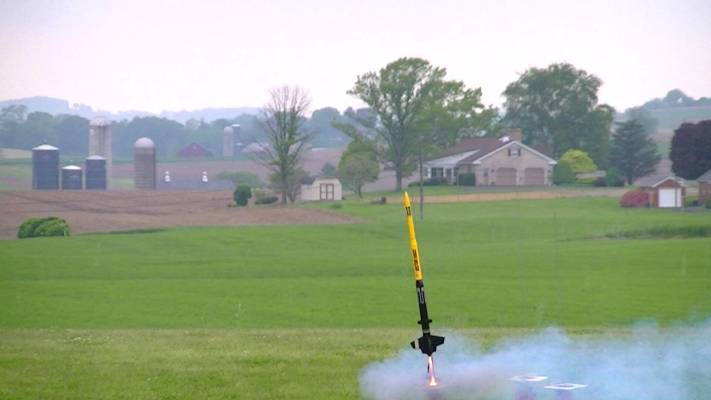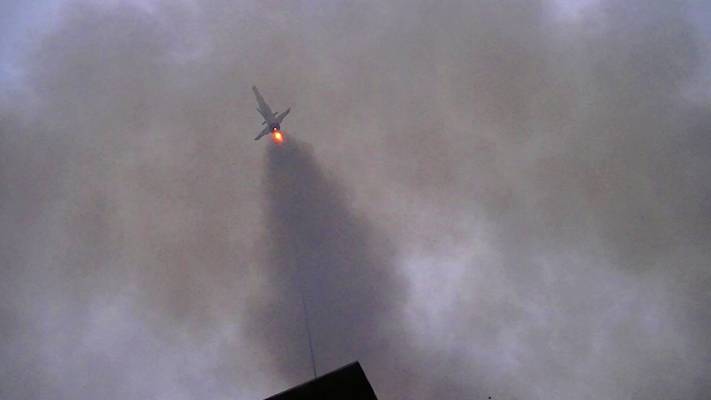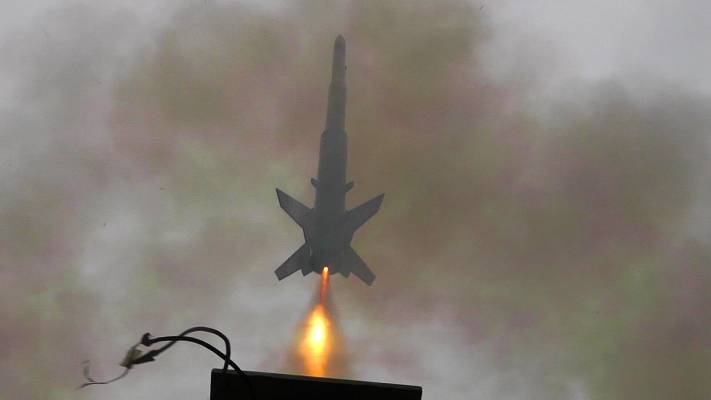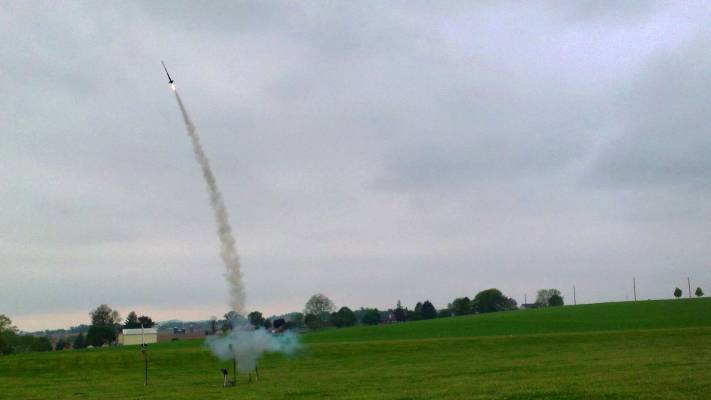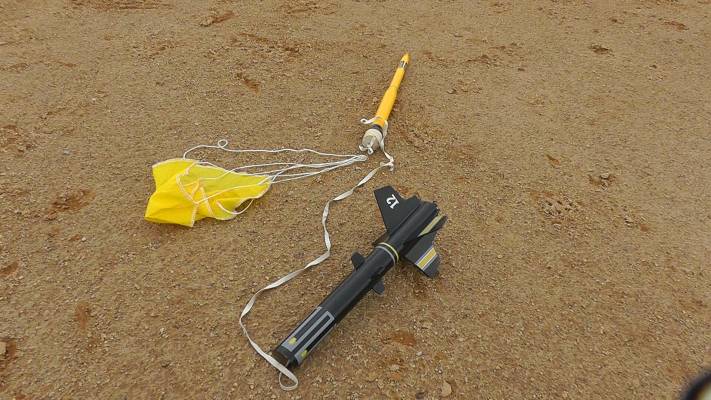The Vector Force: The Vector Force is a modern Estes kit. This was my first model I made as a BAR. It had very good quality balsa fins on my kit, thick and sturdy. You can see the design is inspired by air defense missiles. It is rather tall, but somewhat heavy because of the two reducers. Because it has two reducer stages it has two separate payload tubes. Estes tells you to glue the payload tubes, but why? Good idea if you want to be sure the rocket doesn't separate in flight, but why waste two very nice payload bays? I just make sure they are always good and tight with some masking tape. Mine is painted school-bus yellow and gloss black to better match the included decals. I added about 3 heavy coats of clear coat for a really deep shine. String stability tests with a C motor required about 20-ish grams of nose weight, but now it flies really straight up - provided there is little wind. The top payload tube has vent holes for a barometric altimeter. I've recorded flights in excess of 400 feet with C6 motors. This is my current go-to flagship rocket. I have tried some test flights with composite D engines, to see if I could kick this puppy past 1000 feet. It sure did! In the process, the shock cord was torn out from the mount. This model was repaired by installing a custom ejection baffle with a Kevlar shock cord attachment. Now I think she'll hold up to a few more D-powered launches and ejections. This rocket has flown higher than the NY Times Building in NY, and also the Chrysler Building including the pinnacle, and the Bank of America Plaza in Atlanta.
| Flight Date: | 2012-05-06 |
| Rocket Name: | Vector Force |
| Kit Name: | Estes - Vector Force {Kit} (003210) |
| Flyer's Name: | Rich DeAngelis |
| Motors: | D10-7 |
| Expected Altitude: | 1,100 Feet |
| Wind Speed: | 3.00 mph |
| Launch Site: | Penn Manor School Lancaster PA |
| Actual Altitude: | 742 Feet |
It was time to stop playing around with those little motors and sent the Vector up on a composite D-motor. Because of the expected altitude of this rocket, in addition to the altimeter / accelerometer in the top payload, I installed an audible beeper in the lower payload section to be able to find this model in the tall grass. The additional 14 gram weight shouldn't affect the flight too much, since it already has 7 grams of altimeter and 22 grams of additional nose weight.
The engine chugged three or four times before a solid ignition, and then the rocket tore off the pad with a longer flame and denser smoke than any Estes black-powder engine I've ever used. It accelerated at a peak of 12 Gs, and averaged 5.4 Gs for the 1.4 second burn time. That acceleration was twice what I could expect from a B6 or C6 motor, but it is achieved at 3-times the cost. With that acceleration in light winds I expected very little weather-cocking, but this model turned and flew upwards at about a 30-degree angle from straight.
It reached a speed of 168 mph, and coasted for 5.2 seconds before reaching an apogee of 742 feet. Ejection was late at 7.9 seconds, allowing the model to descend for 2.7 seconds to an altitude one hundred feet lower (641 feet). During this coast time it traveled very far upwind. The parachute ejected and it descended at 19 mph - a bit fast but safe enough (normally).
Considering the distance it traveled upwind, it was good that it came down fast or it easily could have been lost. After a flight time of 32.2 seconds, it landed hard in the dirt of a baseball diamond instead of the typical grass field. This caused a minor separation crack in one fin where the two balsa pieces were glued together to form one fin. As a test flight, this proved that the new ejection baffle and Kevlar shock cord are strong enough for the D10 motor.
Inspection of the heavy-duty nylon parachute revealed the cause of the abnormally high descent rate. The shrouds were formed in the usual way: double the length from the chute to the attachment point and back to the parachute. At the attachment point, I used a small loop of Kevlar so that the smaller Kevlar thread would fit into the small wire loop of a fishing swivel.
Since I didn't think to glue the individual shroud lines to the Kevlar loop, one shroud loop pulled through about 2 or three inches, making the opposite shroud line too short. With one shroud too short and another too long, the parachute opened lopsided. Lesson learned: Glue the shroud lines together to prevent slipping.
| Stage | Motor(s) |
|---|---|
| 1 | Apogee D10-7 |
 |
 |
